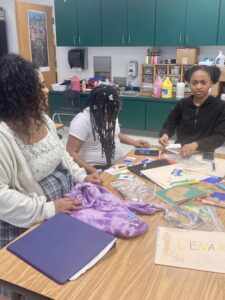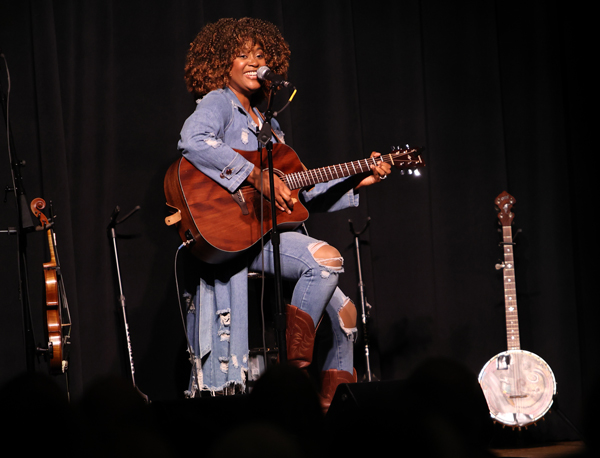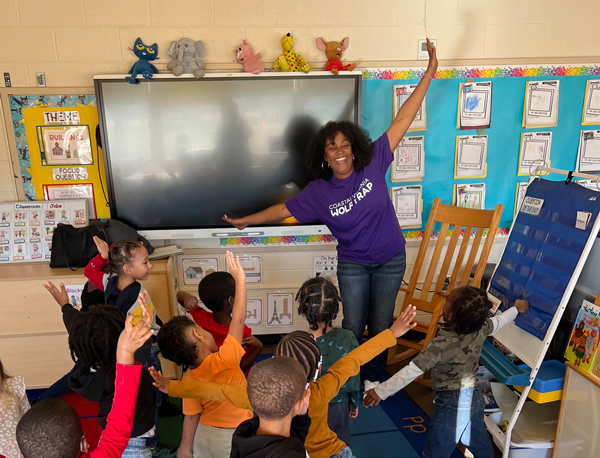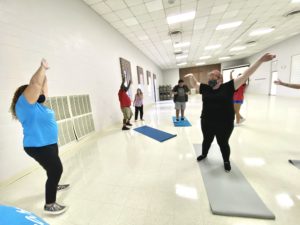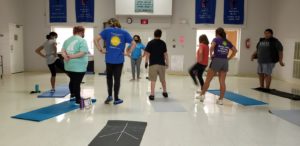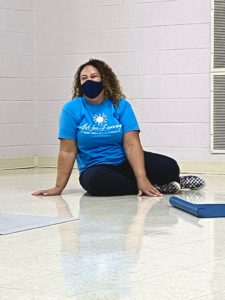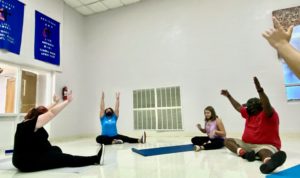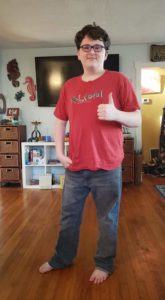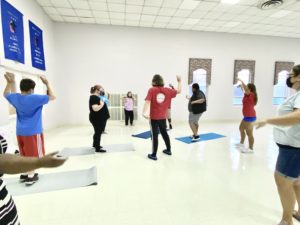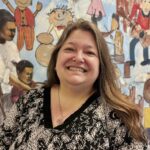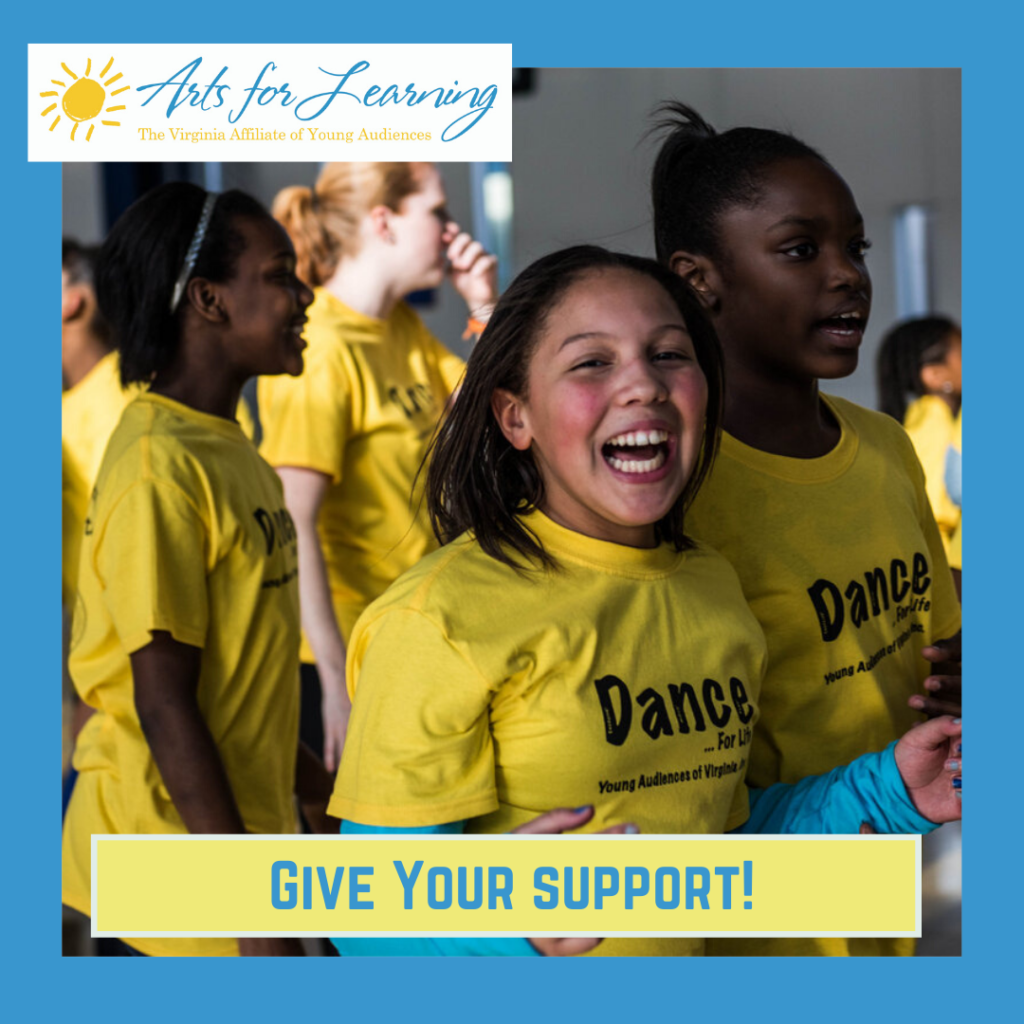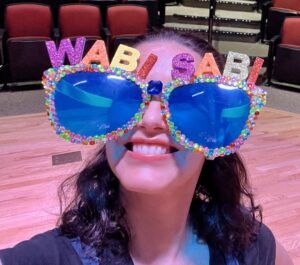 Arts for Learning storyteller Robin Vivian says she was skimming her daughter’s PTA newsletter recently when her jaw dropped.
Arts for Learning storyteller Robin Vivian says she was skimming her daughter’s PTA newsletter recently when her jaw dropped.
“If I were in a car, it’d be like the brakes going [SCREECH]! I thought, that’s incredible because I have literally spent the last year creating this show that’s about accepting imperfection and the concept of looking at it in a different way.”
Robin was reacting to this year’s theme for Reflections, “Accepting Imperfection.” Reflections is a National PTA-sponsored program. Each year more than 300,000 pre-K through 12th grade students make original works of art in response to a student-created theme.
Robin’s program for Arts for Learning Virginia is called The Crack in Everything. The title comes from a line in a Leonard Cohen song: “There’s a crack in everything. That’s how the light gets in.” 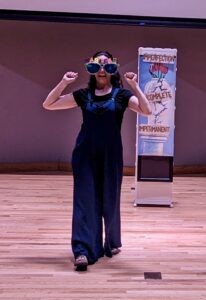
“[Hearing that line] immediately reminded me of one of the first stories I ever learned called The Cracked Pot,” Robin says. The story, which Robin tells in her program, illustrates the beauty that can be found in imperfection, a Japanese concept called “wabi-sabi.” Sharing three multicultural tales and one personal one, Robin uses the wabi-sabi elements of imperfection, impermanence, and incomplete to help students reframe themselves and their experiences.
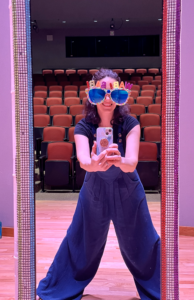 Robin’s role as the mom to a daughter in elementary school influenced how she developed her program—from her daughter’s distress about needing a tutor to the amount of time that age group spends on social media, including watching YouTube videos where they see others with seemingly perfect lives.
Robin’s role as the mom to a daughter in elementary school influenced how she developed her program—from her daughter’s distress about needing a tutor to the amount of time that age group spends on social media, including watching YouTube videos where they see others with seemingly perfect lives.
“I imagine that it would be very easy to watch that and say, ‘Hmm, my life doesn’t look like that, my photos don’t look like that. There must be something wrong with me,’” Robin says. “If they don’t have an outlet to talk to someone about it then they start to make their own narrative and that narrative can very easily go to ‘I’m not enough’ or self-blame or ‘my family’s not enough’ or ‘I’m different,’ which can equal ‘I’m bad’ or ‘I’m not enough.’”
Robin uses the story of The Stonecutter to address that negative narrative. By the end of the story, the stonecutter realizes he had everything he needed, from the very beginning, to be content.
Whatever you have right now, you focus on what you have instead of what you don’t. That’s happiness. You don’t need anything else. So that’s the part of wabi-sabi that’s incomplete.”
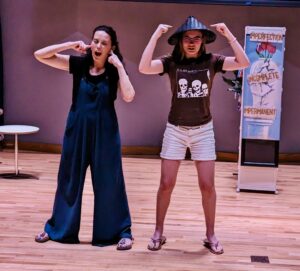
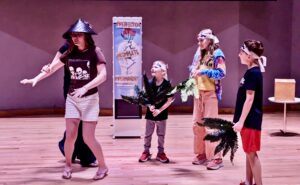 The Crack in Everything is highly interactive. In one portion, for example, students come onto stage to act out a scene and in another they call out guesses related to a “mystery box” Robin brings out—what do its contents of a chocolate chip cookie, Popsicle, Slinky, and Silly Putty have in
The Crack in Everything is highly interactive. In one portion, for example, students come onto stage to act out a scene and in another they call out guesses related to a “mystery box” Robin brings out—what do its contents of a chocolate chip cookie, Popsicle, Slinky, and Silly Putty have in
common? (Think about it and find out if your guess is correct at the end of this story!) 
Along with some humorous moments, the program has a part that’s both difficult to hear and that almost everyone can relate to. It’s Robin’s own story from fourth grade when she desperately wanted a best friend—plus a 90’s-era “best friend charm” to display to her peers—and wound up being rejected in a cruel way. But in the program, Robin shows that the story doesn’t end there. Although she never did become friends with that particular girl, years later in college she met a young woman, Fayth, similar to herself (“very goofy and a lot, just like me.”) Robin had told Fayth her painful story from fourth grade. And on Robin’s 20th birthday, Fayth surprised her with a best friend charm. They remain best friends today, along with A4L teaching artist April Uhrin.
It’s a lovely twist to the story, demonstrating the ever-changing aspect of life, or the wabi-sabi idea of impermanence.
But the story doesn’t end there either.
“When my daughter was in first grade, kids came to her and said she shouldn’t talk to this other little girl because that little girl was weird. And she was struggling with that,” Robin says. “So I told her the story that I just told you. And I watched it transform her. She realized that if she would do that, it would be very similar to what those girls did to me. And that’s hurtful. And I watched her become a kid who cares about other people and she learned compassion. And so that story went on. And she was nice to that little girl.”
That right there is part of the story. The story is the wabi-sabi. That’s the beauty. We all experience things that are painful. We all go through things. Everything ends from time to time. But when we share that experience of someone else hurting, magic happens because we realize that we’re not alone. We have each other. And there’s nothing actually wrong with us. It’s just part of life.”
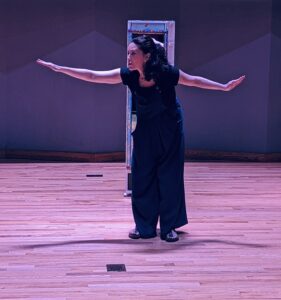 Robin is a professional storyteller, actor, and educator who’s based in Northern Virginia. If you’d like to book Robin for your school, library, theater, or community center, contact Katie Driskill, School and Community Relationships Coordinator, at 757-961-3737 or scheduling@Arts4LearningVA.org.
Robin is a professional storyteller, actor, and educator who’s based in Northern Virginia. If you’d like to book Robin for your school, library, theater, or community center, contact Katie Driskill, School and Community Relationships Coordinator, at 757-961-3737 or scheduling@Arts4LearningVA.org.
The answer to what a chocolate chip cookie, Popsicle, Slinky, and Silly Putty have in common is that they were all created by mistake—from imperfection comes beauty! As Robin puts it, who wants to live in a world without chocolate chip cookies?

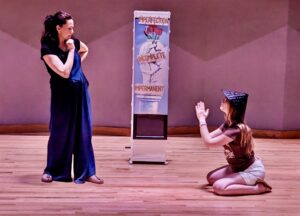
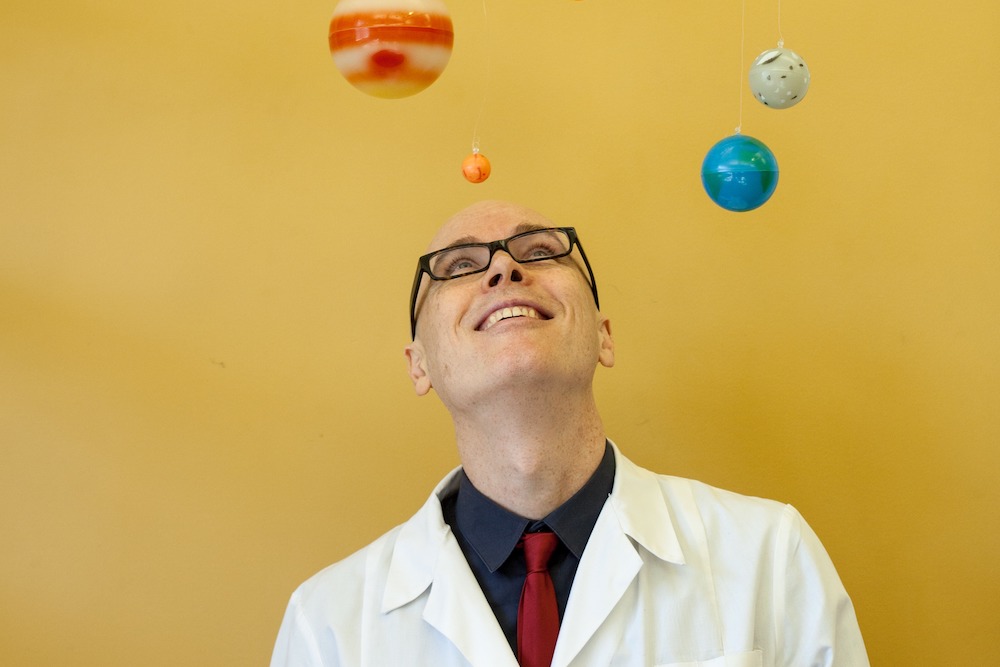
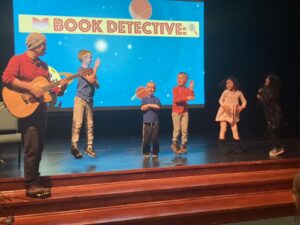
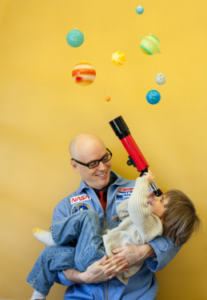 Dino incorporates many styles of music into his work, including blues, folk, reggae, ska, funk, and classical. “Exposing kids to a variety of styles and structures is so powerful,” he says. “They may not recognize that they’re hearing a jazz tune, but they feel a different kind of groove, they experience syncopation, and in the process, their awareness of what’s out there and what’s possible expands.”
Dino incorporates many styles of music into his work, including blues, folk, reggae, ska, funk, and classical. “Exposing kids to a variety of styles and structures is so powerful,” he says. “They may not recognize that they’re hearing a jazz tune, but they feel a different kind of groove, they experience syncopation, and in the process, their awareness of what’s out there and what’s possible expands.” 



